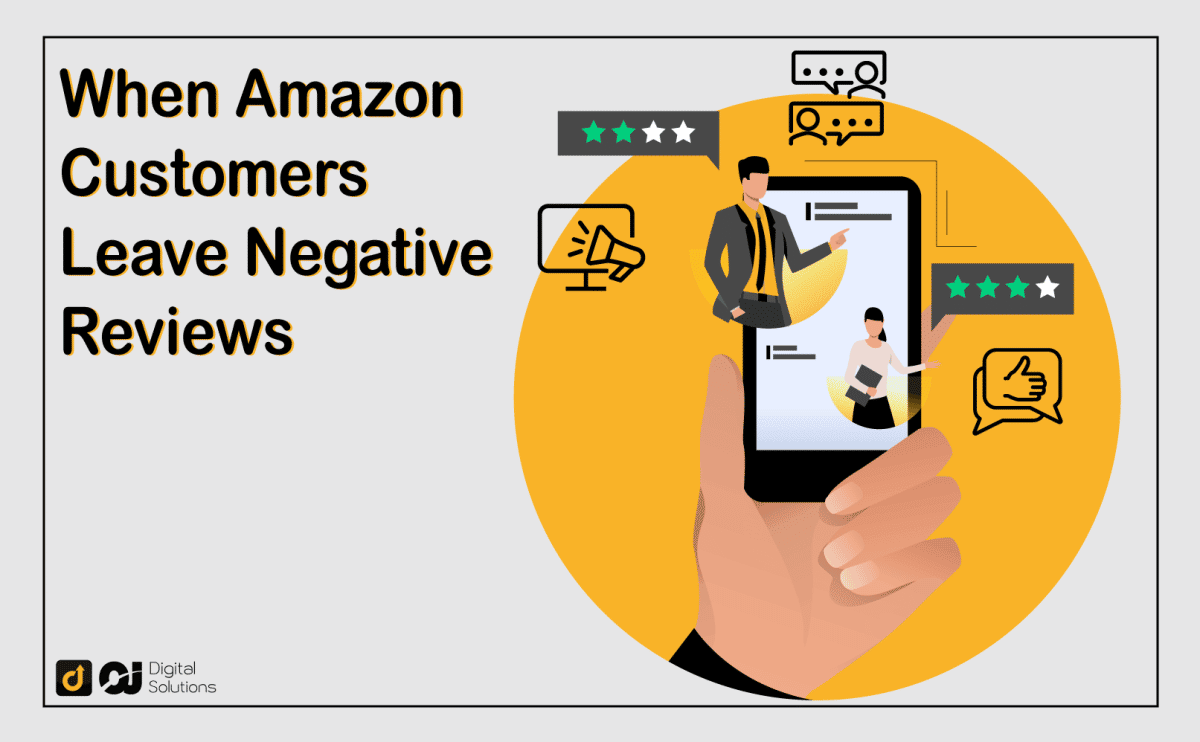As you probably know, your rank and sales will suffer when Amazon customers leave negative reviews,
Reviews play a critical role in customers’ purchase decisions, translating to Amazon’s pushing your product higher up the rankings or tanking it.
For instance, a study reveals that a positive review can increase your sales by up to 18% (an 11% increase in conversion, a 2% average order uplift, and a 5% increase in return visits).
No wonder sellers hunt down those bad reviews!
Lucky for you, in this article, I present the steps and solutions to ensure you avoid receiving negative feedback, increase the chances of deleting negative reviews, and even improve overall positive feedback.
Let’s dive in!
6 Steps & Solutions for Addressing Negative Reviews
88% of online consumers trust online reviews as much as personal testimonies. The same statistic also found that 31% of consumers are more likely to spend on a brand with plenty of positive ratings from multiple customers.
As an Amazon seller, having an in-depth knowledge of removing bad reviews on Amazon brings plenty of advantages.
Let’s take a look at the different steps to take.
1. Monitor Both Negative and Positive Reviews Regularly

“Prevention is always better than cure.”
In this context, dealing with the issue immediately is the best solution when your customers leave a negative review.
This involves monitoring all of your product reviews regularly.
If you don’t have the time to stay on top of unpleasant reviews, you can use an Amazon review tracking tool. I’ve listed the best tools Amazon sellers or third-party sellers should have in my other post to simplify the search process.
Even if investing in a review tracking tool means an extra expense, the time you’ll save can be allocated to other essential responsibilities, making such tools a worthy investment.
2. View the Customer Reviews Page on Seller Central
If you don’t have the budget for a review tracking tool yet or want to monitor reviews manually, visit The Customer Reviews page on Seller Central.
The Customer Reviews page lets you track every new customer review about your product or business. This means you now have easy access to identifying buyers who are unhappy with your products or service.
You can then offer support or relief to customers who leave a star rating lower than four, improving customer satisfaction.
After resolving the issue, politely ask the customer to update their feedback or remove it from your listings page. But don’t pressure or incentivize your customers to modify or remove their negative feedback, as it violates Amazon’s guidelines.
Here’s how you can view and use the Customer Reviews page:
- Step 1: Go to the Customer Reviews option, which is under the Brands tab on Seller Central.
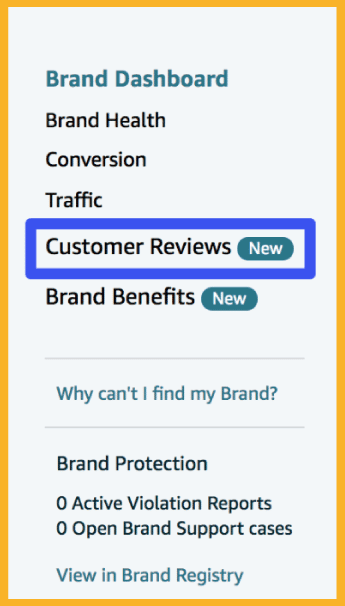
- Step 2: Filter or sort reviews by Brand, Star rating, or Time Period using the filters on the top right.
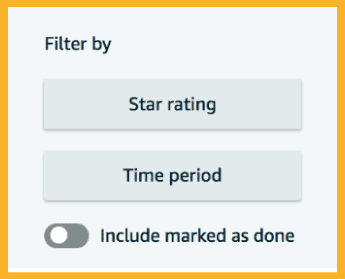
- Step 3: If the review is legitimate or from a verified purchase, you should be able to see a Contact Buyer option on the top right.
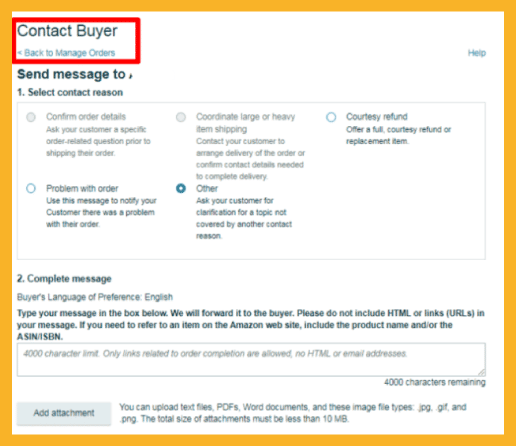
- Step 4: By clicking Contact Buyer, you can either offer a courtesy refund (Courtesy Refund) or clarify any issues why a customer left a bad review (Customer Support).
After the fourth step, an automated email will be sent to the customer’s email address. The email’s purpose is to ask permission from the customer if they want to get in touch with you.
If the customer replies, you can see the buyer-seller message within Seller Central’s Messages Page –– Amazon’s messaging service.
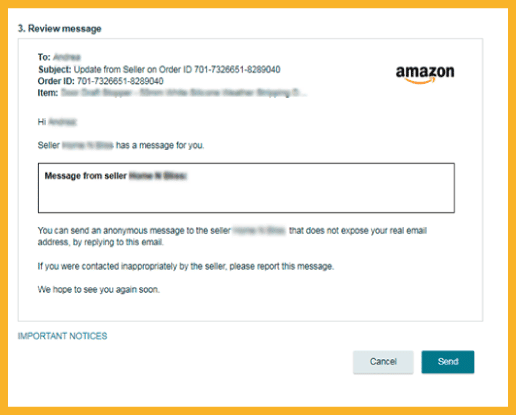
3. Make Sure the Review Is Legitimate
I highly advise investigating whether any unfavorable reviews on your products unquestionably come from an unsatisfied customer.
It’s common for your competitors to leave false negative reviews to hurt your brand image.
There are also situations where dubious sellers offer counterfeit items on Amazon, resulting in inaccurate and unnecessary reviews for the legitimate products’ listing page.
If you find that the negative review isn’t legitimate, report the review to Amazon so their company representative will remove the feedback from your products’ listing pages.
4. Reply Publicly
Once you’re certain that a bad review came from an unhappy customer, replying publicly to the review is another good solution you can take to mitigate the problem.
Replying to all negative feedback and honest review stellar good customer service, but answering reviews publicly, especially negative ones, will help you accomplish the following:
- Give you a new perspective on your products.
- Show other customers the solution you took to address a particular problem.
- Inform prospects that they won’t experience the same problem.
5. Be Professional
Remember that you should maintain professionalism when you reply or address negative feedback.
Most mean reviews aren’t personal attacks, but there are cases when customers write negative reviews due to a misunderstanding.
By not taking reviews personally and professionally handling them, you’ll avoid ruining your brand’s image and even show others that your Amazon business is customer-centric.
As a result, there’s a chance that unsatisfied customers who first had a bad impression of your brand will be repeat customers.
When customers leave bad reviews, here’s my advice on remaining professional: always justify your response on facts alone.
For example, suppose a customer received a blue version of your product but wanted green. In that case, a simple screenshot of the product’s image and the listing title with the word “blue” specified is enough to show the customer they’re the ones who committed an error.
Since Amazon doesn’t share customer email addresses with you, you will need to target customer dissatisfaction by contacting the customer through Amazon’s official channel.
6. Ask Amazon to Remove Negative Reviews
Amazon sellers can request Amazon customer service to remove any reviews.
This solution is ideal if you don’t want to taint your product reviews with a lower star review.
But you shouldn’t always count on Amazon to delete unfavorable reviews.
With Amazon’s new community guidelines, Amazon’s customer service team will only remove reviews that promote competing products, contain foul language, or have no explanation why the product deserves a low-star review.
If you see a bad review or low star rating that meets the criteria, click “Report Abuse,” then explain why you think Amazon should remove it.
Effects of Bad Feedback
In any eCommerce platform, a bad review is always, well, bad.
Recent data shows that 94% of customers avoid buying from a business due to a bad review.
However, when you have just a handful of poor reviews on Amazon, the consequences won’t just affect your brand image and sales, but you’ll also risk your relationship with Amazon.
It’s important to note that the average star rating is not a regular average calculation.
More recent reviews carry more weight. So if you received two good reviews a few months ago but then a bad review recently, the average rate will tend more towards the negative one.
That’s why increasing the number of recent positive reviews is crucial to ensure the average star rating rises.
An overall average star rating of 3.5/5 will result in the following cases:
A Negative Review Means No “Buy Box”
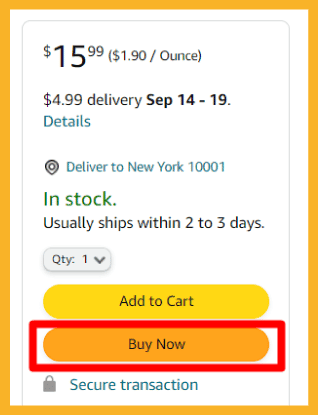
Being a trustworthy Amazon seller is proportional to having nearly perfect star ratings.
In addition to your product’s prices and fulfillment method, a seller’s average rating is also one of the major factors Amazon uses to identify who deserves the “Buy Box.”
If Amazon gives you the “Buy Box,” your products will have priority over other sellers offering the similar or same product.
As a result, customers will most likely buy from you, increasing your sales –– data of Amazon sales go through the “Buy Box.”
A Bad Review Affects Your ODR
The Order Defect Rate (ODR) is one of Amazon’s metrics to assess a seller’s ability to provide a good customer experience.
If your ODR exceeds 1%, Amazon will deactivate your seller account.
Your ODR will increase due to the following reasons:
- Orders result in a credit chargeback claim
- Ignored A-Z Guarantee claim.
- Negative feedback
Difference between Seller or Store Feedback and Product Reviews
Before wrapping up, I should point out that there’s a difference between seller or store feedback and product reviews, both of which can contribute to your success.
However, seller feedback and product reviews follow the same star rating –– five to four star reviews are favorable, three star reviews are neutral, and two to one star reviews are negative.
Now for the difference.
Seller or Store Feedback
The seller or store feedback revolves around the buyer’s impression of the seller.
What affects this score is the seller’s professionalism, response time to any product-related questions, shipping procedure, customers’ concerns, and the product’s packaging are some factors that influence a buyer’s impression.
Failure to meet these factors will result in unhappy buyers.
Product Reviews
Product reviews are primarily what buyers think about the items you sell on Amazon.
To deliver products that’ll fetch a five-star rating, ensure the product quality is exactly how it’s advertised. To meet every customer’s expectations, write an accurate product detail page.
Final Thoughts
Don’t allow any negative feedback to be the reason why you’ll stop selling on Amazon.
When Amazon customers leave negative reviews, check with your product, shipping procedure, and your brand’s customer experience.
If you still receive bad reviews, using the solutions above will allow you to save your brand image, boost customer service, and assure potential buyers that they won’t share the same experience.
Speaking of enhancing customer experience, check my complete guide about Amazon’s Return Policy for sellers!

